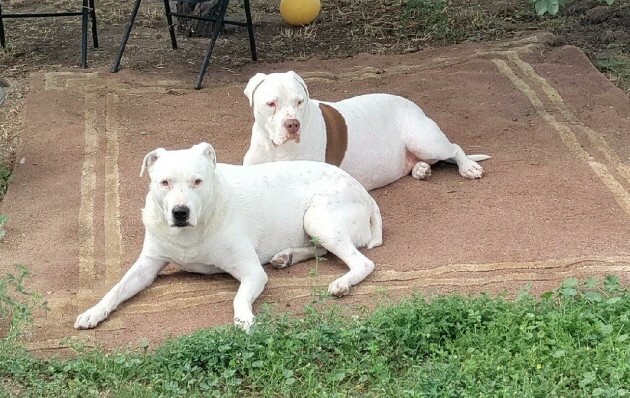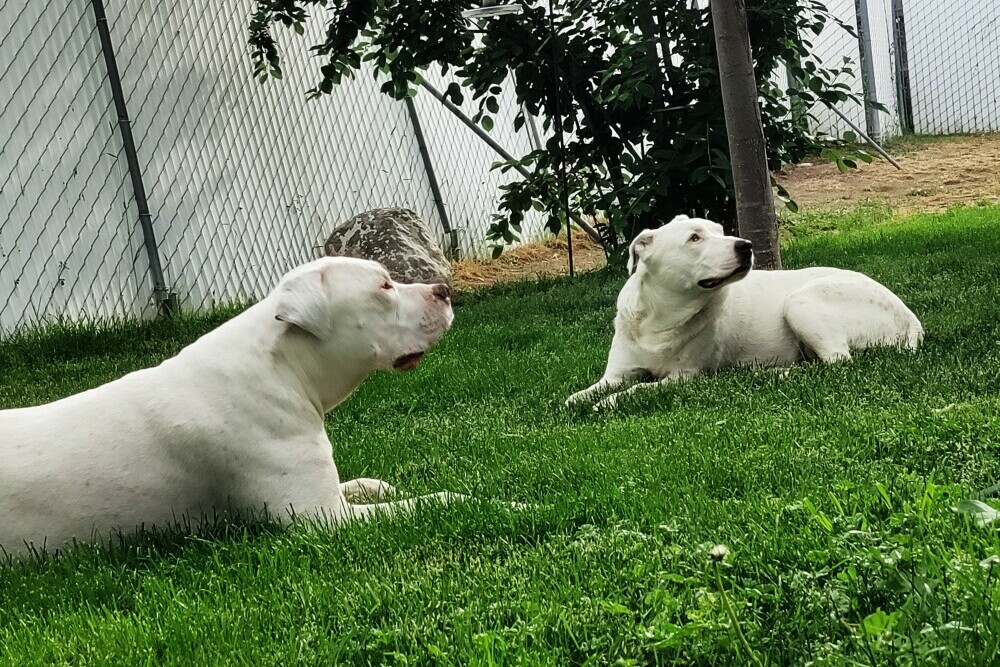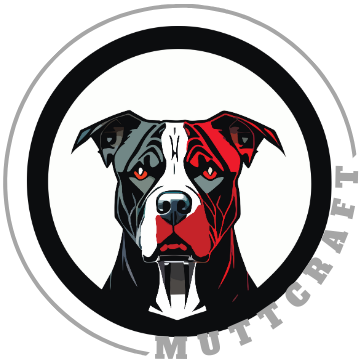The History And Origins Of Pit Bulls
 To discuss the history of pit bulls, I start by tracing their lineage back to the ancient Molossus dogs. These powerful canines, kept by the Molossians, an ancient Greek tribe, are considered ancestors to many of today’s mastiff breeds.
To discuss the history of pit bulls, I start by tracing their lineage back to the ancient Molossus dogs. These powerful canines, kept by the Molossians, an ancient Greek tribe, are considered ancestors to many of today’s mastiff breeds.
Through generations, the descendants of these formidable animals were shaped by humans for various purposes. Initially bred for combat alongside soldiers, these dogs were noted for their courage and strength. As civilizations evolved, so did the role of these early pit bull forebears, transitioning from warriors on battlefields to working dogs on farms and in homes.
A surprising piece of pit bull history is their role as ‘nanny dogs.’ This term paints a picture of a devoted protector and companion to children. While some aspects of this label are romanticized, there is historical evidence of pit bulls being gentle and loyal family pets.
Pit bulls didn’t just endear themselves to families; they were woven into the fabric of early human societies. From guarding estates to managing livestock, their utility extended beyond companionship, marking them as versatile and integral members of human communities.
From Blood sport to Beloved Pets: The Transformation of Pit bulls
 The history of pit bulls is, in parts, harrowing. They were once central to a blood sport called bull-baiting. This cruel spectacle, popular in England, involved pit bulls latching onto the nose of a bull and not letting go until the animal was subdued or dead. Society of the time saw merit in such activities, erroneously believing it tenderized the bull’s meat.
The history of pit bulls is, in parts, harrowing. They were once central to a blood sport called bull-baiting. This cruel spectacle, popular in England, involved pit bulls latching onto the nose of a bull and not letting go until the animal was subdued or dead. Society of the time saw merit in such activities, erroneously believing it tenderized the bull’s meat.
However, public sentiment eventually turned against such barbaric entertainment. Activism for animal rights gained momentum, leading to the Cruelty to Animals Act of 1835, which outlawed blood sports in the United Kingdom. No longer bred for aggression, the roles of pit bulls began to shift.
With bull-baiting consigned to the past, pit bulls found their place in homes as companions and protectors. Their strength and loyalty were now channeled towards more positive roles. They became farm dogs, guardians, and yes, even beloved family pets.
Their hardworking nature wasn’t the only aspect that fueled their transition. Famous pit bulls started to emerge, playing pivotal roles in popular culture and, in doing so, reshaping the public’s perception of the breed. One famed example is Stubby, the most decorated war dog from World War I, who showed the heroism and gentle nature these dogs could exhibit.
The Breed Behind the Name: Recognizing Pit bull Varieties
 When I say ‘pit bull’, what image does your mind conjure? To many, the term ‘pit bull’ sparks a singular image, but the reality is a tapestry of breeds, each with its own unique characteristics and history. The term ‘pit bull’ is not a breed, but a classification that includes several breeds with similar traits. In this section, I’ll clarify what breeds are commonly referred to as pit bulls and what sets each apart.
When I say ‘pit bull’, what image does your mind conjure? To many, the term ‘pit bull’ sparks a singular image, but the reality is a tapestry of breeds, each with its own unique characteristics and history. The term ‘pit bull’ is not a breed, but a classification that includes several breeds with similar traits. In this section, I’ll clarify what breeds are commonly referred to as pit bulls and what sets each apart.
The most commonly recognized breed within the ‘pit bull’ category is the American Pit bull Terrier. These dogs are known for their strength, confidence, and zest for life. Another breed often labeled as a pit bull is the Staffordshire Bull Terrier, smaller in stature, but brimming with courage and a loving demeanor. Others include the American Staffordshire Terrier and the American Bully, each breed distinguished by varying physical characteristics and temperaments.
Despite sharing a powerful physique and a certain degree of tenacity, these breeds are individuals at heart and must be seen as such. Each breed has its own specific set of qualities that, unfortunately, are often misunderstood or misrepresented due to widespread myths. It’s these misconceptions that have led to unfair generalizations and, in some cases, breed-specific legislation that targets these dogs, not based on individual behavior, but rather breed affiliation.
Understanding the genetic makeup and the character of these breeds is not just about getting facts right; it’s about promoting responsible ownership. When people are well-informed, they’re better prepared to provide the appropriate training, socialization, and care that these dogs need. This enlightenment is vital as we transition into the next section, which discusses how education and understanding can dispel the myths that surround pit bull-type breeds.
Advocating for Understanding: Addressing Myths and Realities
 Misconceptions about pit bulls are widespread, and it’s my task to shine a light on the truth. One pervasive myth is the idea of a ‘locking jaw’ mechanism in pit bulls, which implies they have a unique physical trait allowing them to clamp down with irrevocable force. However, canine experts have debunked this; pit bulls’ jaw structures are no different from any other dog breed.
Misconceptions about pit bulls are widespread, and it’s my task to shine a light on the truth. One pervasive myth is the idea of a ‘locking jaw’ mechanism in pit bulls, which implies they have a unique physical trait allowing them to clamp down with irrevocable force. However, canine experts have debunked this; pit bulls’ jaw structures are no different from any other dog breed.
Public perception is often swayed by negative portrayals in the media leading to a stereotype of pit bulls as inherently dangerous. Yet, in temperament testing by organizations like the American Temperament Test Society, pit bulls consistently score as well, if not better, than many popular family-friendly dog breeds.
Behavior in dogs, including pit bulls, largely depends on training, socialization, and the environment provided by their owners. A pit bull raised with kindness and proper training can exhibit exceptional levels of loyalty, friendliness, and obedience.
Efforts to challenge the negative stigma surrounding pit bulls are growing. Many nonprofits and advocacy groups are dedicated to educating the public, supporting responsible ownership, and rescuing these often-misunderstood dogs. Recognizing that breed-specific legislation is not the answer, these organizations advocate for policies that focus on individual behavior rather than breed.
When considering the history of pit bulls and the misconstrued narratives that have shaped their modern-day image, it becomes clear that education and awareness are key. Decisions should be guided by factual information and responsible practices rather than fear-driven myths. By understanding the true nature of pit bulls and recognizing the effect of human influence on their behavior, we can welcome these capable and affectionate dogs into communities as cherished companions.

Bj
Great info ! And those are some super cute pitties
admin
Thanks! I’m glad you liked it.